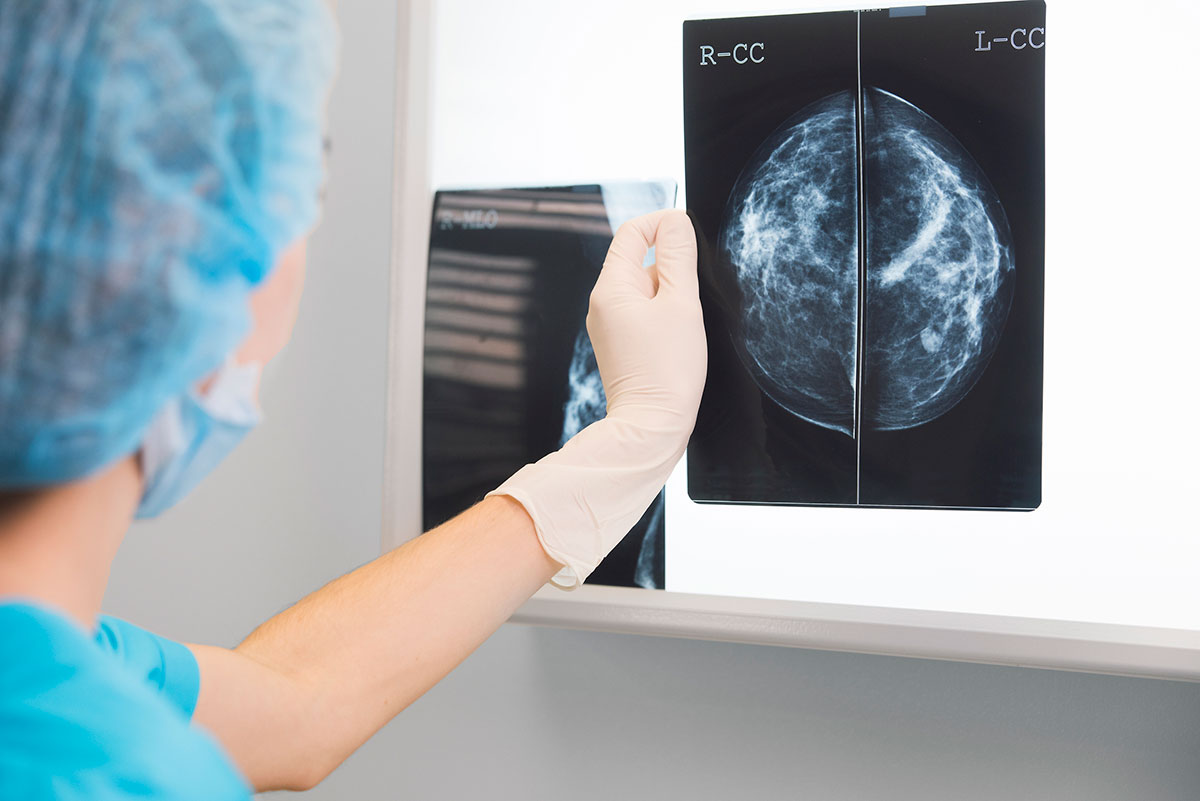<< Back
New: Radiofrequency Seeds Aid Breast Surgery, Improve Cosmetic Results

September 10, 2019
Not all breast disease can be felt, so surgeons have developed ways to mark the lump or lesion for more effective removal. At Hartford HealthCare, that process just got a lot more high-tech and efficient.
This month, the Hartford HealthCare Cancer Institute Breast Program becomes the first in the state to offer women the option of having radiofrequency seeds, the size of a sesame seed, implanted in the breast before surgery so surgeons can better pinpoint the area to remove.
“This technology will be available to any woman with a non-palpable mass or high-risk lesion,” said Dr. Heather King, the breast specialist who will perform the first seed removals on June 27. “It not only reduces the amount of breast tissue we need to remove in surgery but it also leaves the woman with superior cosmetic results.”
Dr. King, who is director of breast surgery at Hartford Hospital, is working in conjunction with Dr. Diana James, a radiologist who will implant the seeds in four patients on June 12.
“This technology is a huge improvement to needle localization, which is what we currently offer,” said Dr. James. “The seed can be implanted weeks before surgery during a normal outpatient appointment, increasing the convenience for patients and serving as a much more comfortable, accurate procedure.”
While the procedure will be available at Hartford Hospital this month, Dr. King said it will soon be available to breast patients at Midstate Medical Center, The Hospital of Central Connecticut and Backus and Windham hospitals, all in the Hartford HealthCare system.
Up to this point, when a mass or lesion is identified through diagnostic imaging – ultrasound, mammogram or MRI – the patient first undergoes a core biopsy and a clip is placed to mark the site. Tissue removed during the biopsy is analyzed by pathologists to determine if it is suspicious tissue and must be surgically removed, Dr. King said.
If surgery is scheduled, the patient must arrive early in the morning to have a hookwire placed next to the clip. The wire can be seen coming out of the breast and can be uncomfortable for the patient. Surgery is then performed, removing suspicious breast tissue, the wire and the clip.
Using seed localization, the clip is placed during the biopsy procedure. If surgery is needed, the patient returns to radiology a few days before so the seed can be placed next to the clip. Nothing is extending out of the breast and there is no discomfort. In surgery, the clip, seed and targeted tissue are removed.
“The seed localization allows us to uncouple the procedures, making it more convenient for the patient to have the seed implanted. In addition, because the technology is so precise, we will later be able to take less tissue when we remove the seed,” Dr. King explained. “With the seed, we use a hand-held device in the operating room to give us specific direction on where to go and remove just that piece of tissue.”
There is research showing that the new seed technology is more accurate, requiring removal of less breast tissue and leaving a more intact breast. Dr. King also said the advancement helps women avoid the pain of an additional procedure to implant the wire, which can also move and lessen surgical accuracy.
Unlike other products, these seeds are not radioactive but made of a variety of metals to provide radiofrequency. There is no nickel included, though, for those with associated allergies.
Dr. King and other Hartford HealthCare breast surgeons employ the techniques of hidden-scar breast surgery, entering the breast through three discrete locations so when the surgical incisions heal, they are largely invisible.
“Our goal is to remove any tissue that threatens the health of the patient, but also to leave her with an aesthetically pleasing breast afterwards,” Dr. King said.
For more information on the breast cancer treatment at the Hartford HealthCare Cancer Institute, click here.